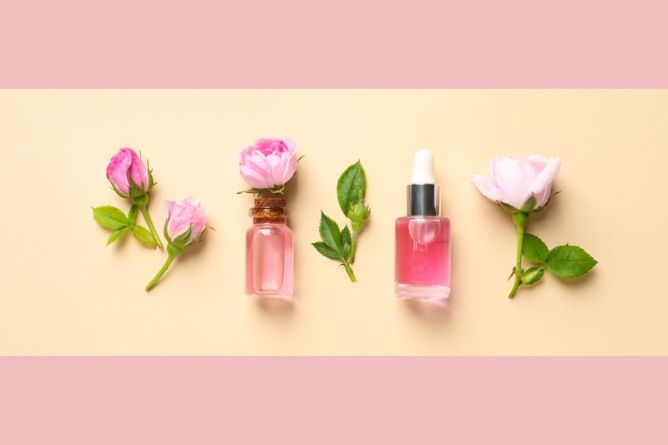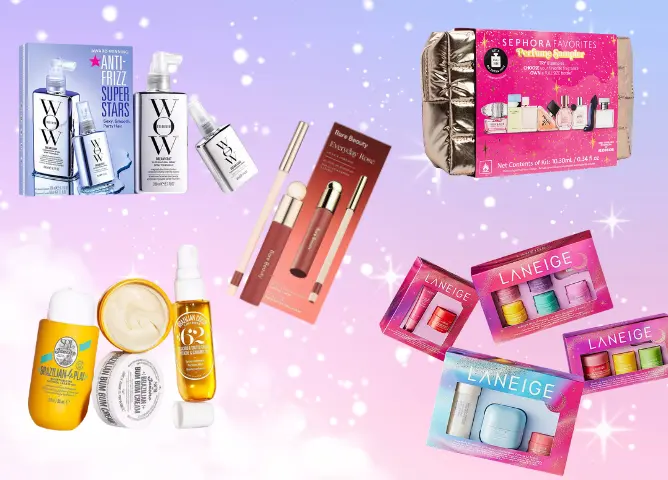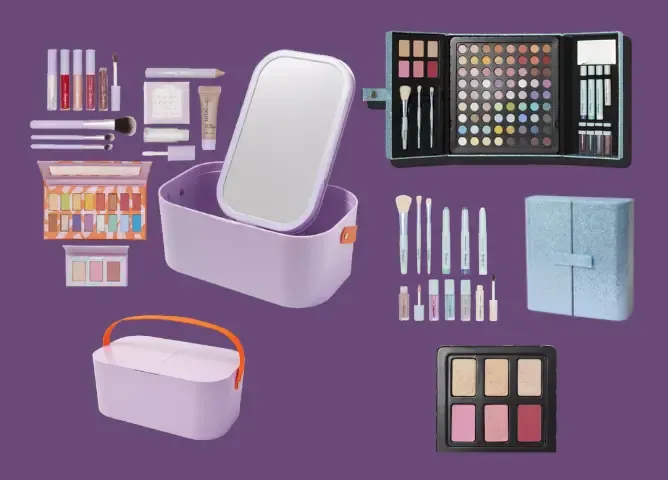In This Article
This post may contain affiliate links, please see our privacy policy for details.
Hey there, beautiful souls! Are you excited to add another all-natural, eco-friendly superstar to your beauty collection? If you've been tagging along with us and playing around with our DIY recipes, you're already well-versed in the magic of homemade skincare. You've whipped up face mists, concocted setting sprays, brewed toners, crafted hydrating masks, lathered up with homemade body washes, gone eco-chic with makeup removers, painted on lip tints, and pampered your pout with lip masks. Guess what's next on our beauty bucket list? The enchanting realm of face oils!
Creating your own face oil is not just a win for your wallet, but it's also an absolute blast. Plus, it gives you the freedom to customize the formula to meet your skin's unique needs. So, how about we kickstart this journey toward a radiant glow together? Let's dive in, shall we?
CONTENT SUMMARY
What is a Face Oil?
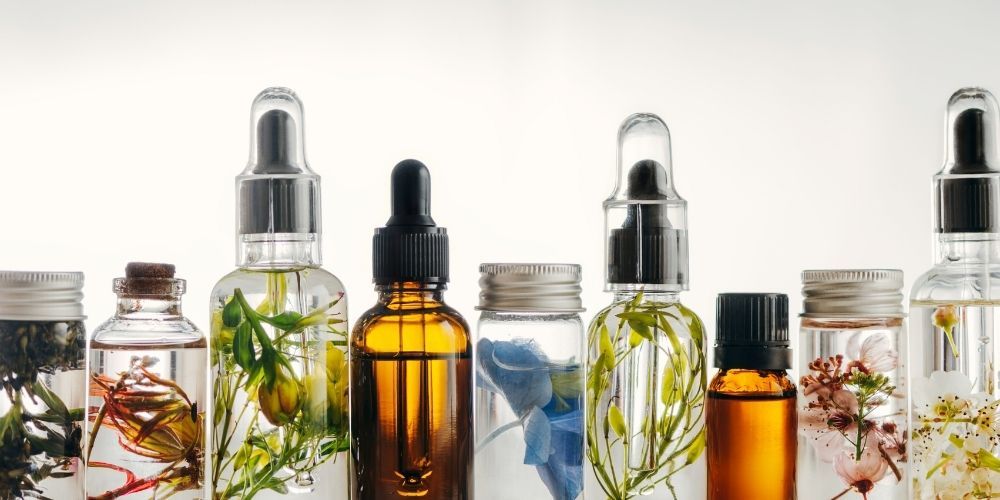
A face oil is a skincare product that is specifically formulated for application on the face. It is designed to nourish and moisturize the skin, as well as provide various other benefits. Face oils have gained popularity in recent years as part of a skincare routine due to their ability to address specific skin concerns and provide a radiant complexion.
There are two main types of face oils: carrier oils and essential oils. Carrier oils are derived from plant sources and act as a base for essential oils. They are rich in fatty acids, vitamins, and antioxidants, which help to hydrate and protect the skin. Common carrier oils include jojoba oil, rosehip oil, argan oil, and almond oil.
On the other hand, essential oils are highly concentrated extracts derived from plants. They are known for their potent aroma and therapeutic properties. Essential oils are often added to carrier oils to enhance their benefits. Examples of popular essential face oil used include lavender oil, tea tree oil, rosemary oil, and chamomile oil. Each essential oil has unique properties that can address specific skin concerns such as acne, aging, or inflammation.
When using homemade face oils, it's important to select one that suits your skin type and concerns. Face oils can be used in different ways, either alone or in combination with other skincare products. They can be applied directly to the skin after cleansing and toning, or mixed with moisturizers or serums for added benefits. Face oils are typically applied in small amounts and gently massaged into the skin using upward motions.
Embark on a journey to radiant skin with our enriching DIY Beauty Series featuring Face Mist Recipes, Makeup Setting Spray Recipes, Homemade Face Toner Recipes, Face Oil Recipes, and Hydrating Face Mask Recipes. Explore these guides and discover beauty secrets you can whip up right in your kitchen!
Why Make Your Own Face Oil?
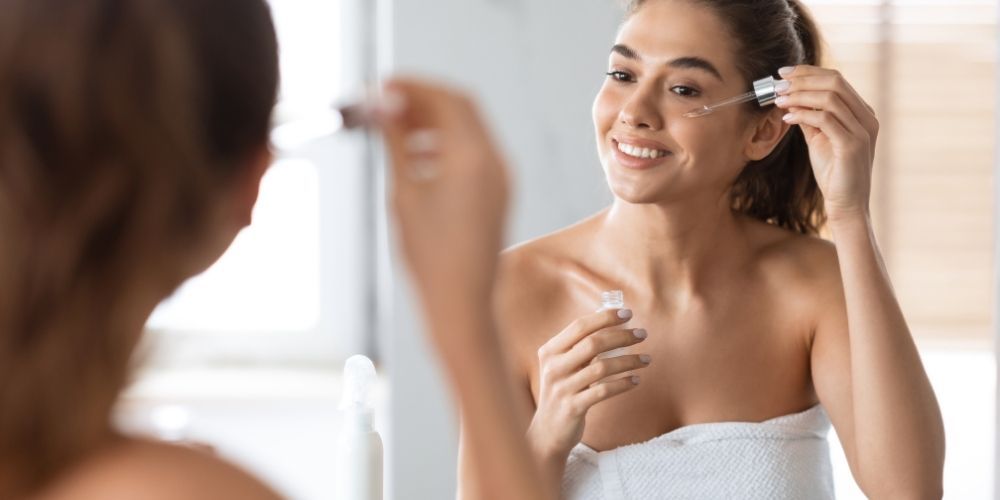
Making your own face oil can be a rewarding and beneficial approach to skincare. Here are a few reasons why some individuals choose to create their own homemade face oil:
Understanding what goes onto your skin
By making your own face oil, you have full control over the ingredients that go into it. You can carefully select high-quality carrier oils and essential oils that suit your skin type and address your specific concerns. This allows you to have a deeper understanding of the ingredients and their benefits, ensuring that you are using a product that aligns with your skincare needs.
Cost-effective Skincare
DIY face oils can be a cost-effective alternative to store-bought options. Creating your own allows you to bypass the costs associated with commercial packaging, branding, and marketing. Moreover, you can purchase carrier oils and essential oils in larger quantities, which often results in savings in the long run. This way, you can customize your face oil without breaking the bank.
Eco-friendly Approach
Making your own face oil is a sustainable choice. By opting for DIY skincare, you can reduce packaging waste associated with commercial products. Additionally, you have the flexibility to choose organic and ethically sourced ingredients, supporting environmentally friendly practices.
Customization and Flexibility
DIY face oils offer the freedom to tailor the formula to your specific skin needs. You can experiment with different carrier oils and essential oils to create a blend that addresses your unique concerns, whether it's dryness, acne, aging, or sensitivity. This level of customization allows you to adapt your face oil as your skin changes and evolves over time.
Creative Expression
Making your own face oil can be a creative and enjoyable process. You have the opportunity to explore different ingredients, scents, and textures, making it a fun and personal skincare endeavor. It can also serve as a self-care ritual, providing a moment of relaxation and pampering.
While DIY face oils can be a great option for many individuals, it's important to educate yourself about proper ingredient selection, formulation, and storage. Ensure you are aware of any potential allergies or sensitivities and consult with a dermatologist or skincare professional if needed.
Transform your lip care routine with our DIY Beauty Series packed with Homemade Lip Tint Recipes and Luscious Lip Mask Recipes. Dive into these tutorials and learn how to create natural and nourishing lip products at home!
How to Make Face Oil at Home
Making face oil at home is a straightforward process that involves mixing carrier oils and essential oils. Here's a step-by-step guide on how to make face oil at home:
Choose Your Carrier Oils
Select one or more carrier oils that suit your skin type and concerns. Some popular options include jojoba oil, rosehip oil, argan oil, and almond oil. These oils provide nourishment and hydration to the skin.
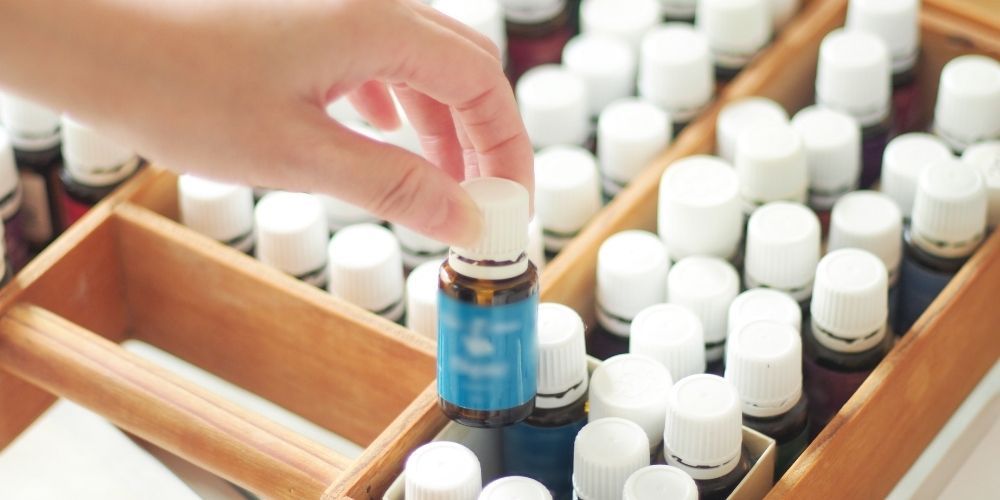
Select Your Essential Oils
Essential oils are highly concentrated extracts derived from plants. Choose essential oils that complement your skin's needs. For example, lavender oil is soothing, tea tree oil is beneficial for acne-prone skin, and rosemary oil has antioxidant properties. Remember that essential oils should be used sparingly due to their potency.

Determine the Ratio
The ratio of carrier oil to essential oil will depend on personal preference and the specific oils used. As a general guideline, a safe dilution ratio for essential oils in face oil is 1-2% (about 6-12 drops of essential oil per ounce of carrier oil). This ensures that the essential oils are properly diluted and safe for use on the skin.
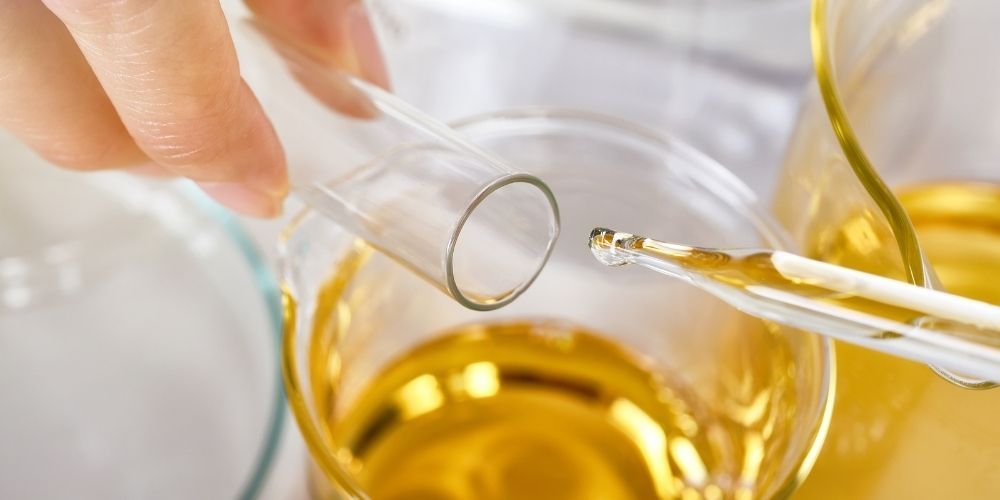
Mix the Oils
In a clean glass bottle or container, combine the carrier oils and essential oils. Start by pouring the desired amount of carrier oil into the container, then add the essential oils drop by drop. Gently swirl or shake the bottle to ensure thorough mixing.
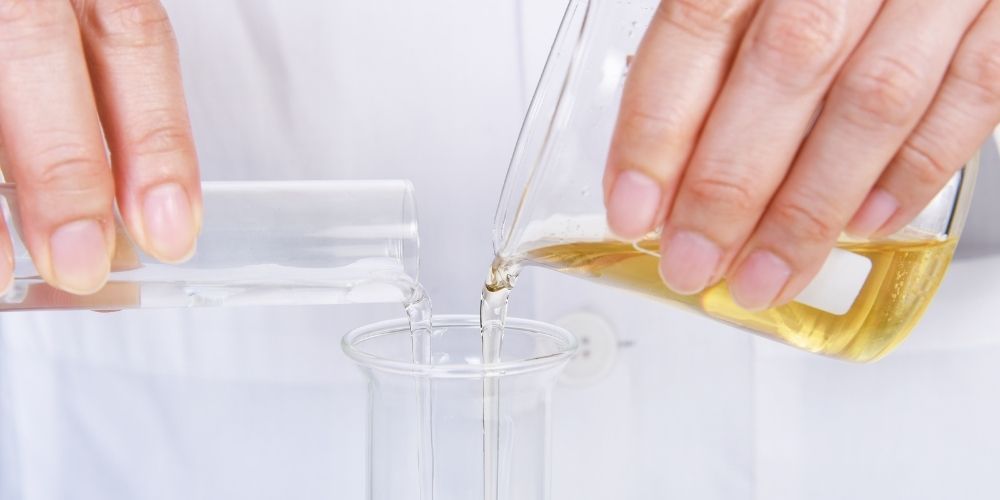
Store and Use
Seal the container tightly and store it in a cool, dark place away from direct sunlight to maintain the oil's potency. When using the face oil, apply a small amount to cleansed skin and gently massage it using upward motions. You can use it in the morning or evening, depending on your skincare routine and preference.
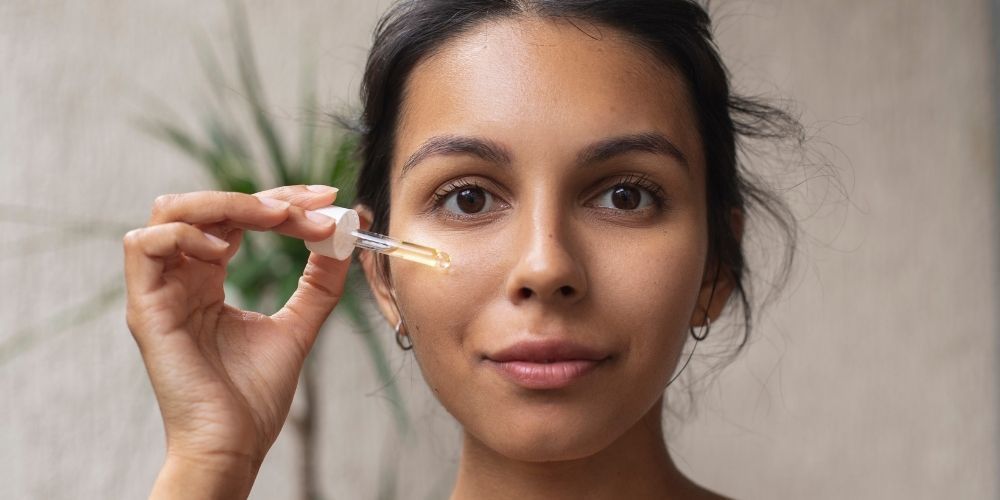
Safety Considerations:
- Essential oil dilution: It's crucial to properly dilute essential oils to prevent skin irritation or sensitization. Follow the recommended dilution guidelines and avoid using undiluted essential oils directly on the skin.
- Patch testing: Before applying the face oil to your entire face, perform a patch test on a small area of your skin to check for any adverse reactions or allergies. Wait for 24 hours and observe for any signs of irritation or discomfort.
- Sensitivities and allergies: Be mindful of your individual sensitivities or allergies to specific oils. Some essential oils may not be suitable for certain individuals, so it's important to research and know which oils to avoid if you have known sensitivities.
By following these steps and considering safety precautions, you can create personalized and effective face oil at home. Remember to research the properties of carrier oils and essential oils to select the most suitable ones for your skin type and concerns.
Immerse yourself in the world of homemade body care with our DIY Beauty Series. Delve into Homemade Body Wash Recipes and Eco-Friendly Makeup Remover Recipes, and discover the satisfaction of crafting your own body care essentials!
Benefits of DIY Face Oils
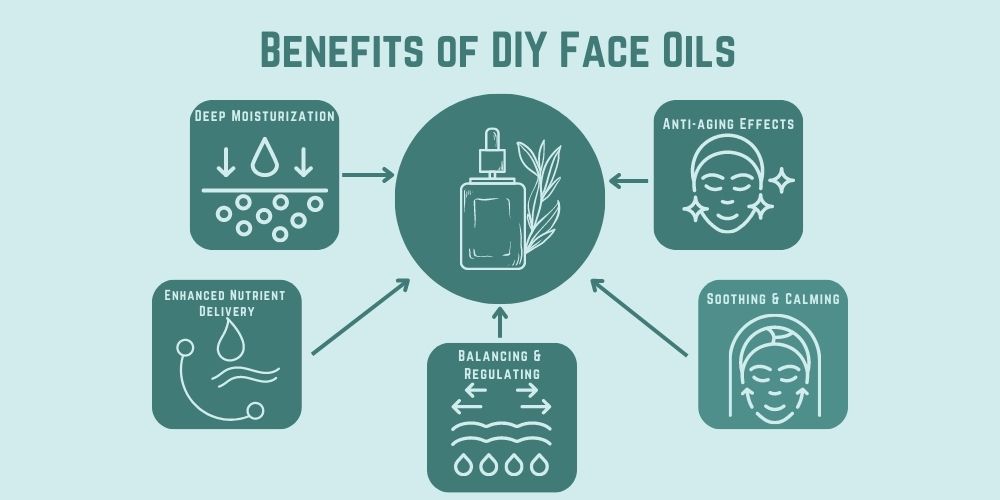
One of the key benefits of DIY face oils is the ability to customize the formulation according to your specific skin type and concerns. Different skin types require different types of oils and ingredients to achieve optimal results. By creating your own face oil, you have the flexibility to choose the oils that work best for you, whether you have dry, oily, sensitive, or combination skin. You can also incorporate specific essential oils or botanical extracts known for their beneficial properties for addressing concerns like acne, inflammation, or hyperpigmentation.
Deep Moisturization
DIY face oils are an excellent way to provide deep and long-lasting moisture to the skin. They contain rich and nourishing oils that penetrate deeply into the skin, helping to hydrate and replenish moisture levels. This can be particularly beneficial for dry or dehydrated skin, as the oils create a protective barrier that prevents moisture loss, leaving the skin soft, supple, and moisturized.
Enhanced Nutrient Delivery
DIY face oils can act as a vehicle for delivering a wide range of nutrients to the skin. By customizing the oil blend, you can incorporate oils that are rich in vitamins, antioxidants, and essential fatty acids, which are all beneficial for the skin. These nutrients help nourish and revitalize the skin, promoting a healthy and radiant complexion. For example, oils like argan oil, rosehip oil, and evening primrose oil are known for their high vitamin and antioxidant content, which can help improve skin tone, texture, and overall health.
Balancing and Regulating Sebum Production
Contrary to what you might think, using face oils can actually help balance the skin's natural oil production. When the skin is stripped of its natural oils due to harsh cleansers or environmental factors, it may overcompensate by producing excess oil, leading to oiliness and breakouts. DIY face oils, when formulated with the right oils, can help regulate sebum production, preventing excessive oiliness and promoting a more balanced complexion. Oils like jojoba oil and grapeseed oil are particularly beneficial in this regard as they closely resemble the skin's natural sebum and can help regulate oil production.
Soothing and Calming Properties
Many DIY face oils contain botanical extracts or essential oils that have soothing and calming properties. These ingredients can help alleviate redness, inflammation, and irritation, making them ideal for sensitive or reactive skin. Oils such as chamomile, lavender, and calendula have been traditionally used for their soothing properties and can help calm the skin, reducing redness and discomfort.
Anti-aging Effects
DIY face oils can provide anti-aging benefits by nourishing and protecting the skin from environmental damage. The high concentration of antioxidants in certain oils helps fight free radicals, which are responsible for premature aging and skin damage. Additionally, oils like rosehip oil, argan oil, and pomegranate seed oil are rich in essential fatty acids, which can help improve skin elasticity, reduce the appearance of fine lines and wrinkles, and promote a more youthful complexion.
DIY face oils offer deep moisturization, and enhanced nutrient delivery, and can help balance sebum production on the skin. They also have soothing and calming properties, making them suitable for sensitive skin, and provide anti-aging effects by nourishing and protecting the skin from environmental damage. Incorporating DIY face oils into your skincare routine can help improve the overall health and appearance of your skin.
Best Oils for Skincare
Carrier oils play a crucial role in skincare as they serve as the base for DIY face oils, providing hydration, and nourishment, and helping to deliver active ingredients to the skin. Here are some popular carrier oils commonly used in skincare:
Jojoba Oil
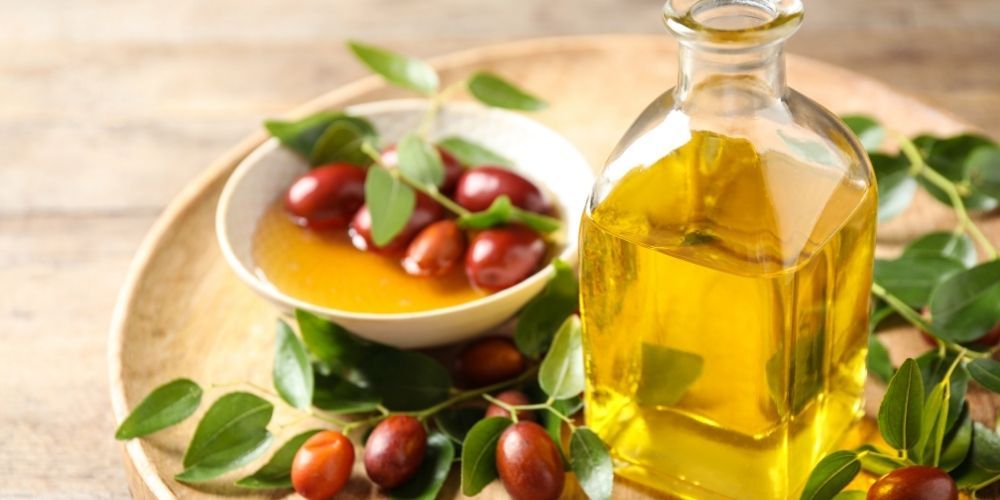
Jojoba oil is lightweight, non-greasy, and closely resembles the skin's natural sebum. It is easily absorbed, making it suitable for all skin types. Jojoba oil helps balance oil production, moisturizes the skin, and has soothing properties, making it beneficial for acne-prone, sensitive, and dry skin.
Rosehip Oil
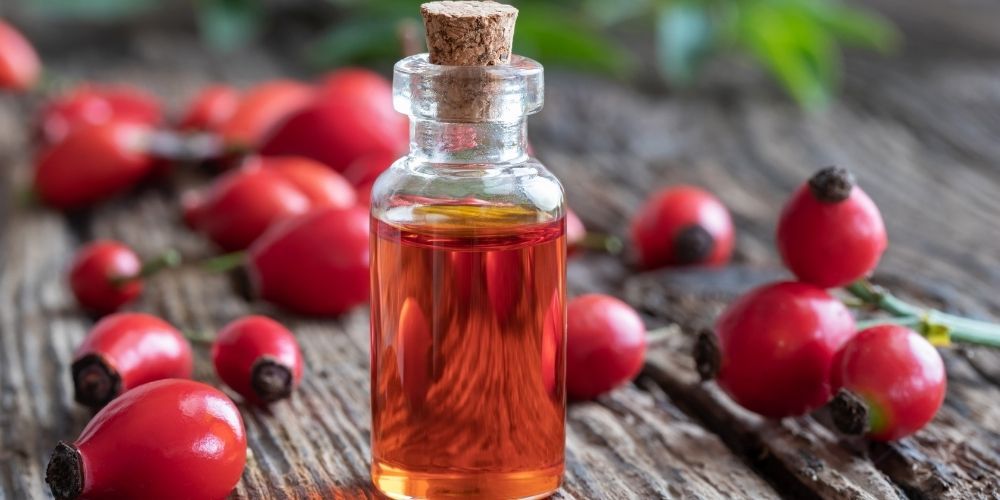
Rosehip oil is extracted from the seeds of wild rose bushes. It is rich in essential fatty acids, antioxidants, and vitamins A and C. Rosehip oil helps hydrate and improve skin texture, reduces the appearance of scars and wrinkles, and promotes a more even skin tone. It is particularly beneficial for aging and damaged skin.
Argan Oil
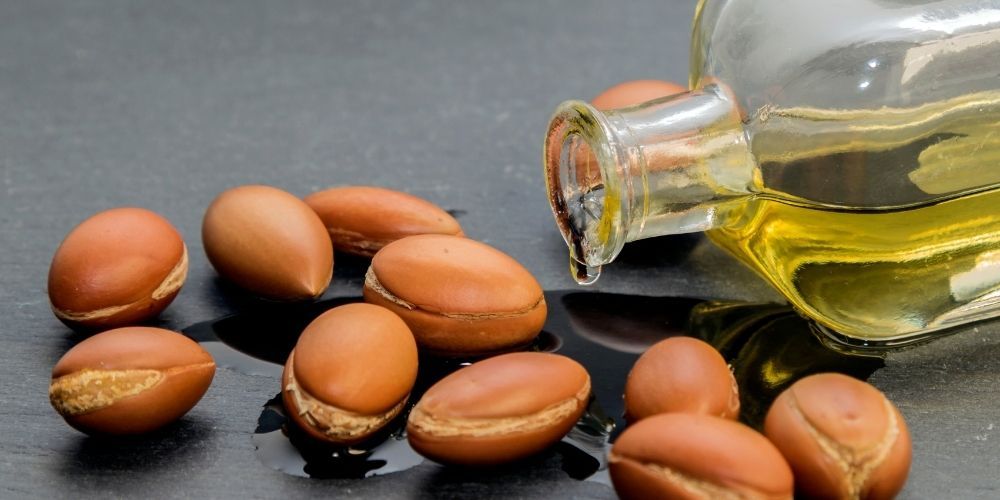
Argan oil is derived from the kernels of the argan tree. It is rich in antioxidants, vitamin E, and essential fatty acids. Argan oil moisturizes and nourishes the skin, helps improve elasticity, and reduces the appearance of fine lines and wrinkles. It is suitable for all skin types and can also be used for hair and nail care.
Essential oils are highly concentrated plant extracts that offer various therapeutic benefits for the skin. When using essential oils, it's important to dilute them in carrier oil before applying them topically. Here are some popular essential oils used in skincare:
Lavender Oil
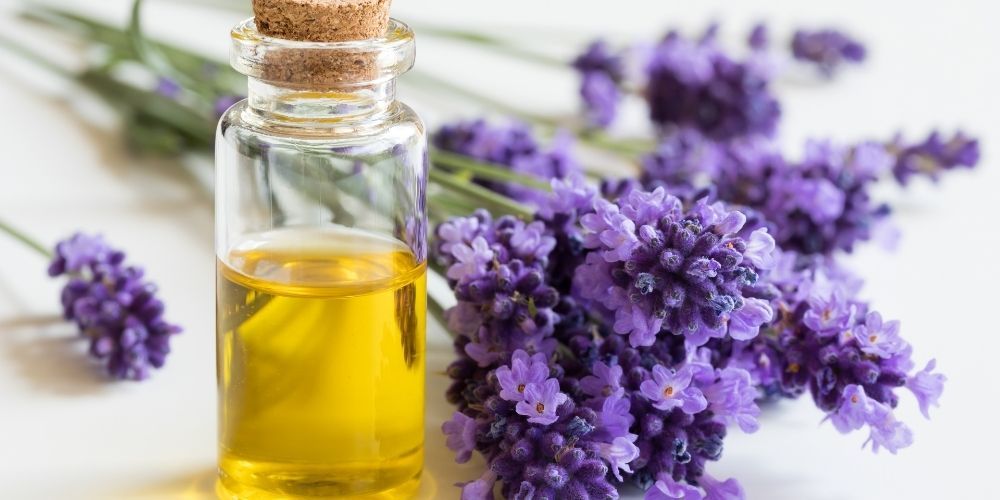
Lavender oil has calming and soothing properties, making it ideal for sensitive or irritated skin. It can help promote relaxation, reduce inflammation, and may aid in the healing process of minor skin irritations.
Tea Tree Oil
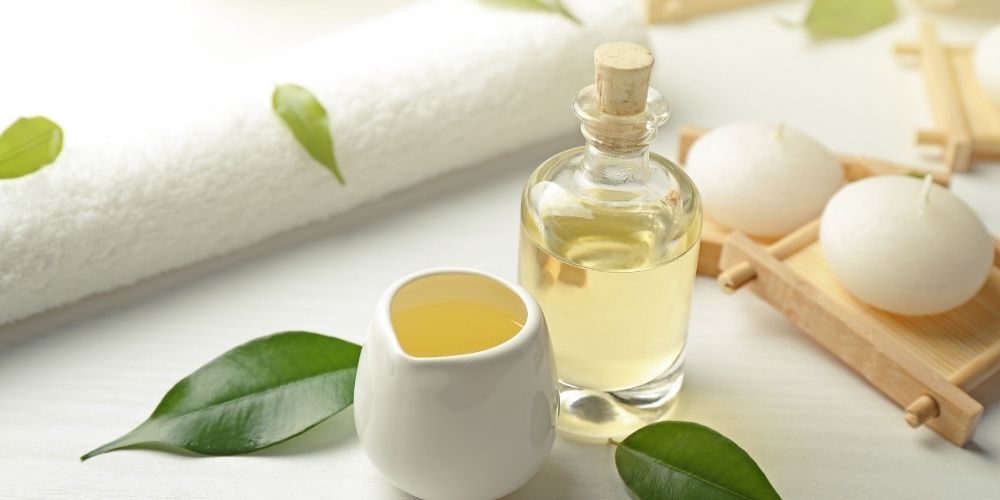
Tea tree oil is known for its antibacterial and antiseptic properties, making it effective in addressing acne-prone or blemished skin. It can help reduce inflammation, control excess oil production, and prevent bacterial growth on the skin.
Frankincense Oil
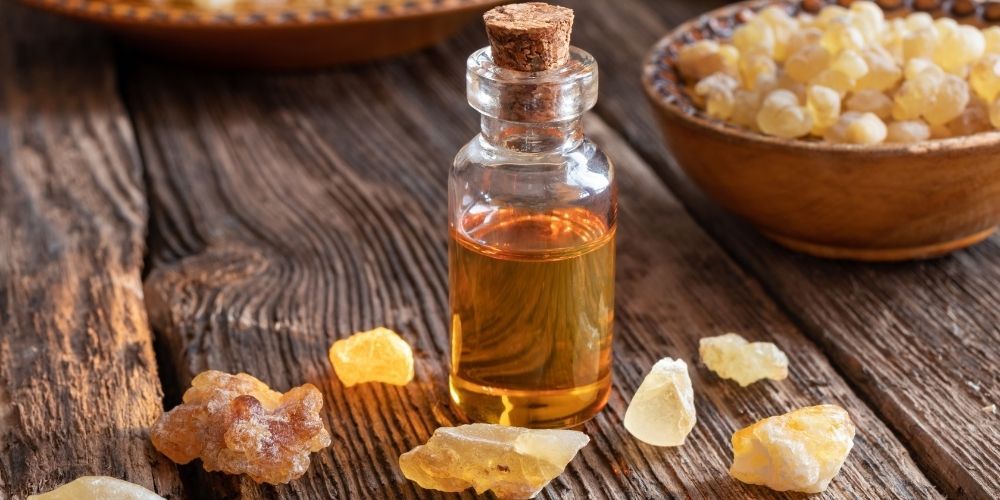
Frankincense oil has rejuvenating and anti-aging properties. It helps promote cellular regeneration, improve skin tone and elasticity, and reduce the appearance of scars and fine lines. Frankincense oil is also known for its calming aroma.
It's worth noting that everyone's skin is unique, and individual sensitivities may vary. It's recommended to perform a patch test and consult with a dermatologist or aromatherapist before using essential oils to ensure they are suitable for your specific needs.
As you venture into the world of DIY face oils, it's essential to know which oils suit your skin type best. We highly recommend the YouTube video "8 Inexpensive Oils For Skincare" This comprehensive guide provides in-depth information on various oils and their specific benefits, helping you address your skin concerns more effectively. Whether you're dealing with hyperpigmentation, acne, aging skin, oily skin, or dry skin, this resource will equip you with the knowledge to choose the right oils for your skincare needs. So make sure to give it a watch before you start mixing your DIY face oil recipes for radiant skin!
How to Use Face Oil
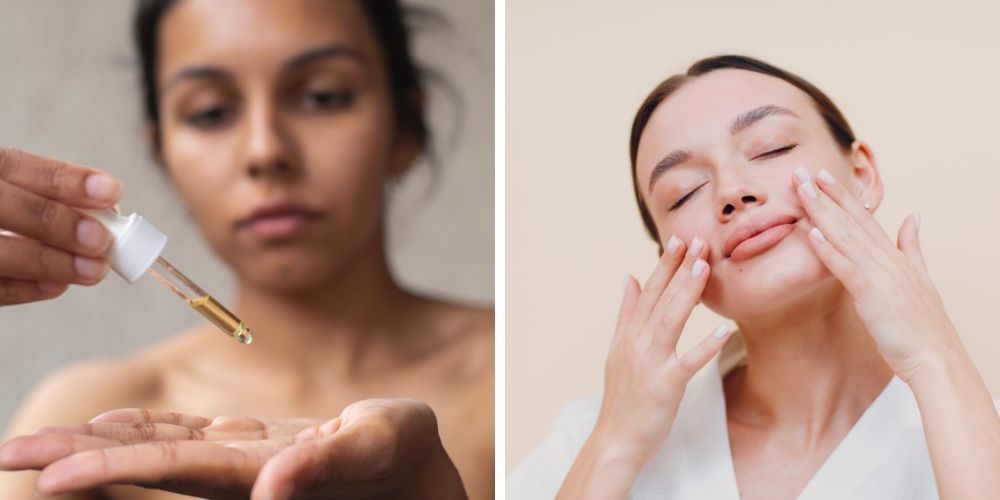
To effectively use face oil in your skincare routine and maximize its absorption and effectiveness, follow these tips:
- Cleanse and Tone: Start by cleansing your face with a gentle cleanser to remove dirt, oil, and impurities. Follow with a toner to balance the skin's pH levels and prepare it for better absorption of the face oil.
- Moisturizer First, Face Oil Second: If you use a moisturizer in your routine, apply it before the face oil. The moisturizer acts as a hydrating barrier, and the face oil can seal in the moisture, enhancing its effectiveness. Allow the moisturizer to absorb fully before moving on to the face oil.
- Use the Right Amount: Remember that a little goes a long way with face oils. Start with a small amount, usually 2-3 drops, and gently massage it onto your face and neck. You can always add more if needed. Applying too much oil may leave a greasy residue on the skin.
- Warm It Up: Rub the face oil between your palms to warm it up slightly. This helps the oil spread more easily and enhances its absorption into the skin.
- Gentle Patting or Pressing Motion: Rather than vigorously rubbing the face oil onto your skin, use a gentle patting or pressing motion. This helps the oil penetrate into the deeper layers of the skin without tugging or pulling on the delicate skin.
- Focus on Dry Areas or Specific Concerns: Pay extra attention to areas that tend to be drier, such as the cheeks or forehead. If you have specific skin concerns, like fine lines or hyperpigmentation, gently massage the face oil onto those areas to target them more effectively.
- Allow Time for Absorption: Give the face oil a few minutes to absorb into the skin before applying any additional products, such as sunscreen or makeup. This allows the oil to fully penetrate and provide its benefits.
- Adjust for Day and Night: You can incorporate face oil into both your morning and evening skincare routines. In the daytime, consider using a lighter oil or reducing the amount to avoid excessive shine under makeup. At night, you can opt for a slightly heavier oil to provide extra hydration and nourishment while you sleep.
Remember, everyone's skin is unique, so you may need to experiment with different face oils and find the one that works best for you. Additionally, consistency is key with face oils, so incorporate them into your skincare routine regularly for long-term benefits.
6 DIY Face Oil Recipes
Ready to take your skincare routine to the next level? With a little creativity and a few natural ingredients, you can tailor your own face oils to suit your unique skin needs. From a basic blend to a glow-inducing concoction and even an anti-aging miracle, we've got you covered. So, let's dive in and explore these 6 DIY Face Oil Recipes that are bound to revolutionize your beauty regimen!
For each recipe: An image of the final product, and perhaps an image of it being applied to the skin.
⬇️ 6. Basic DIY Face Oil
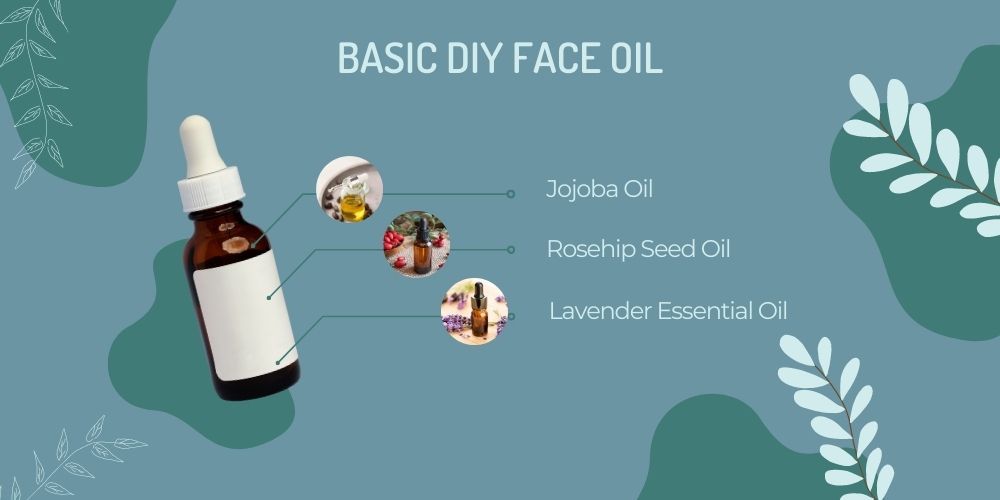
Ingredients:
- 2 tbsp Jojoba Oil (carrier oil)
- 1 tbsp Rosehip Seed Oil
- 5 drops of Lavender Essential Oil
Instructions:
Begin your journey into homemade facial oils with this basic DIY facial oil recipe. Jojoba oil is a great carrier oil for all skin types, even for those with oily skin, as it mimics the skin's natural oils. Combine 2 tablespoons of jojoba oil with 1 tablespoon of rosehip seed oil.
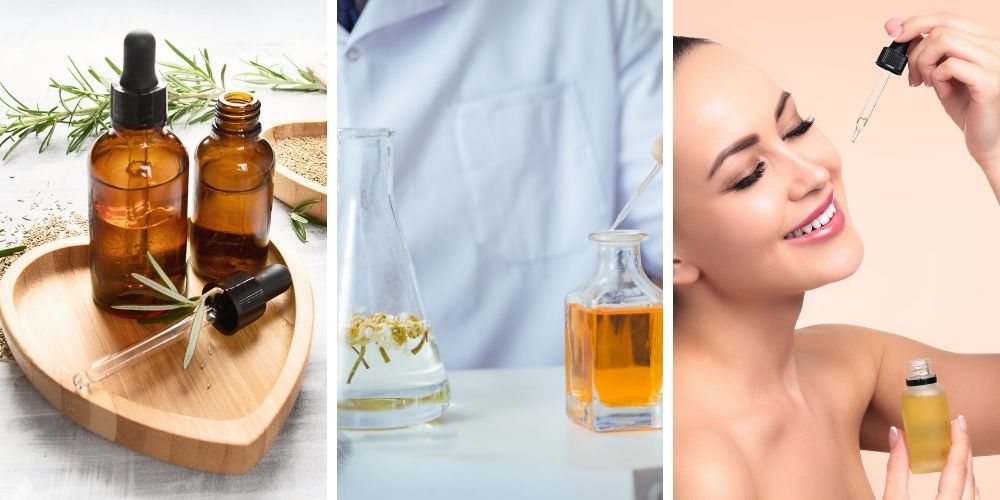
The latter is celebrated for its anti-aging and skin-rejuvenating properties. Finally, add a few drops (around 5) of lavender essential oil, known for its calming effects, perfect for irritated skin. Mix these natural oils together and apply to your face after cleansing for a hydrating and soothing treatment.
⬇️ 5. DIY Face Cleansing Oil
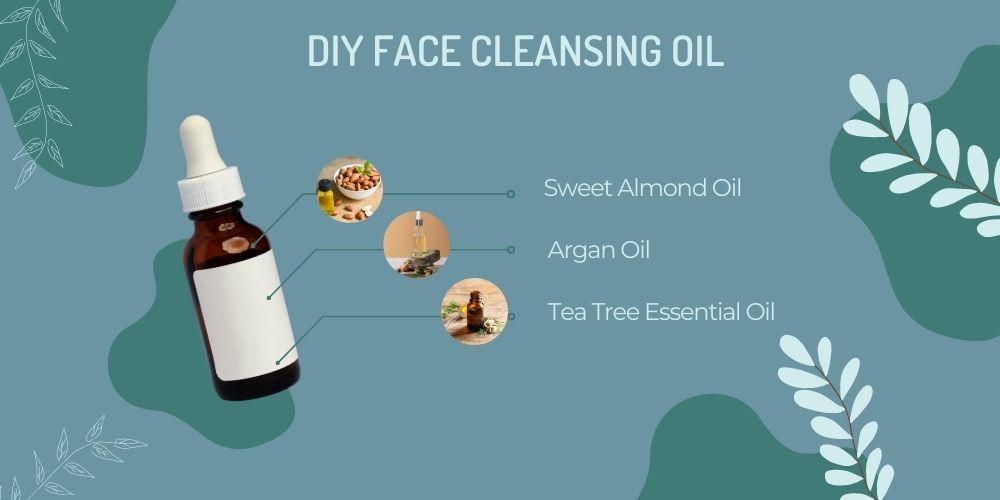
Ingredients:
- 2 tbsp Sweet Almond Oil
- 1 tbsp Argan Oil
- 5 drops of Tea Tree Essential Oil
Instructions:
In creating your own facial oil for cleansing, you'll need 2 tablespoons of sweet almond oil, known for gently removing impurities, and 1 tablespoon of argan oil, which adds an extra layer of moisturizing benefits.
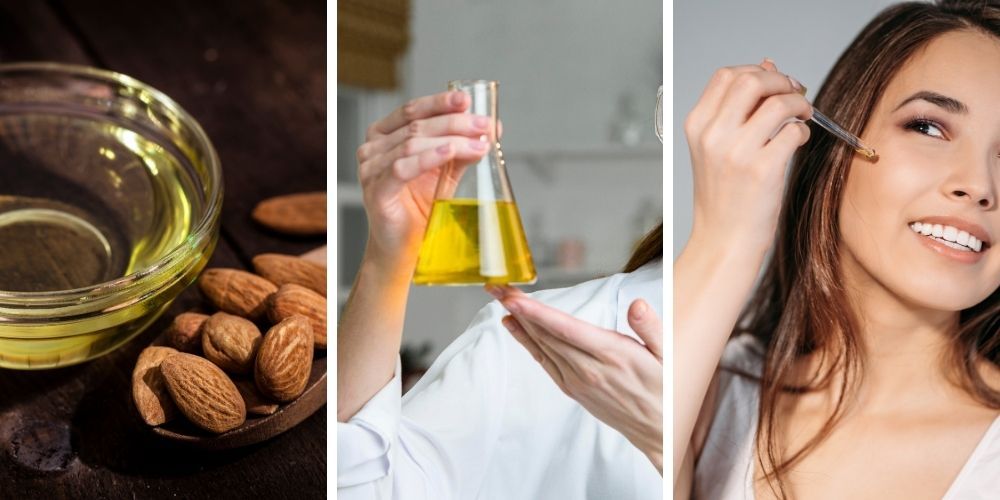
Add a few drops (about 5) of tea tree essential oil, a fantastic ingredient for its antiseptic properties, making it ideal for oily and acne-prone skin. This DIY facial cleansing oil recipe not only cleanses but also nourishes your skin, leaving it soft and supple.
⬇️ 4. DIY Coconut Oil Face Mask
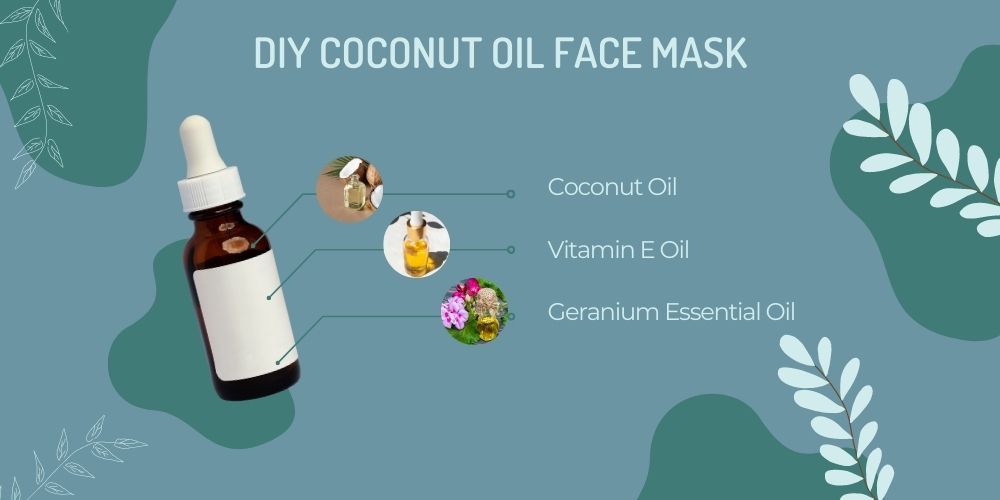
Ingredients:
- 2 tbsp Coconut Oil
- 1 tbsp Vitamin E Oil
- 5 drops of Geranium Essential Oil
Instructions:
For your DIY coconut oil face mask, start with 2 tablespoons of coconut oil. This oil is known for its deep moisturizing properties, especially beneficial for dry skin. Add in 1 tablespoon of vitamin E oil, a powerful antioxidant that can help repair and protect your skin.
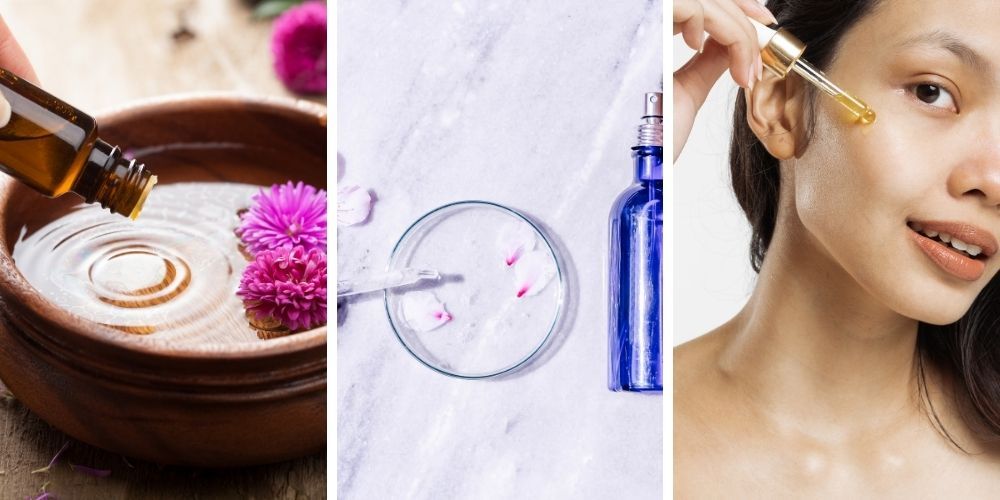
Then, include a few drops of geranium essential oil (around 5), which is known for promoting the appearance of clear and healthy skin. Apply this mask generously and leave it on for 15-20 minutes before rinsing for a deeply moisturizing and refreshing facial treatment.
⬇️ 3. DIY Face Oil for Glowing Skin
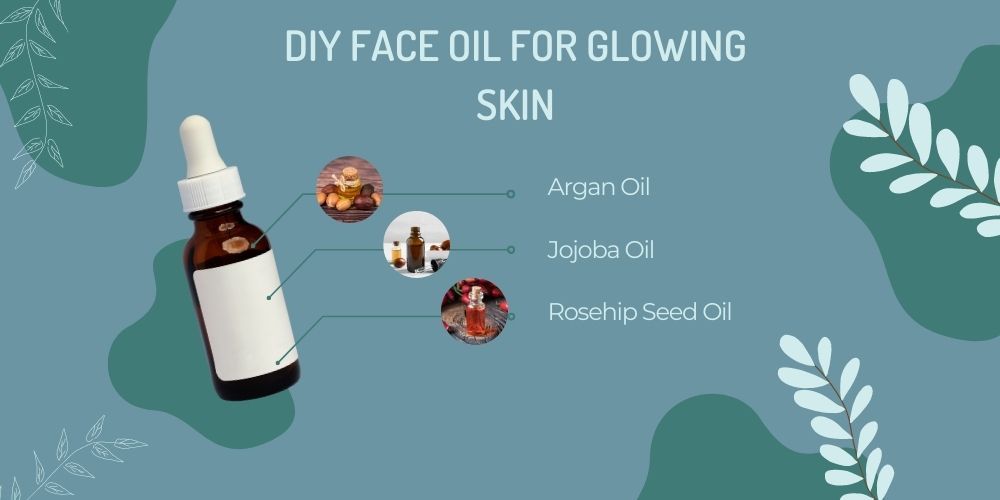
Ingredients:
- 2 tbsp Argan Oil
- 1 tbsp Jojoba Oil
- 5 drops of Rosehip Seed Oil
Instructions:
For a DIY facial oil that promotes a natural glow, combine 2 tablespoons of argan oil, rich in essential fatty acids and vitamin E, with 1 tablespoon of jojoba oil, a carrier oil that balances your skin's sebum production. Add a few drops of rosehip seed oil, celebrated for its skin-brightening properties. Regular use of this facial oil recipe will help restore your skin's natural glow and keep it hydrated.
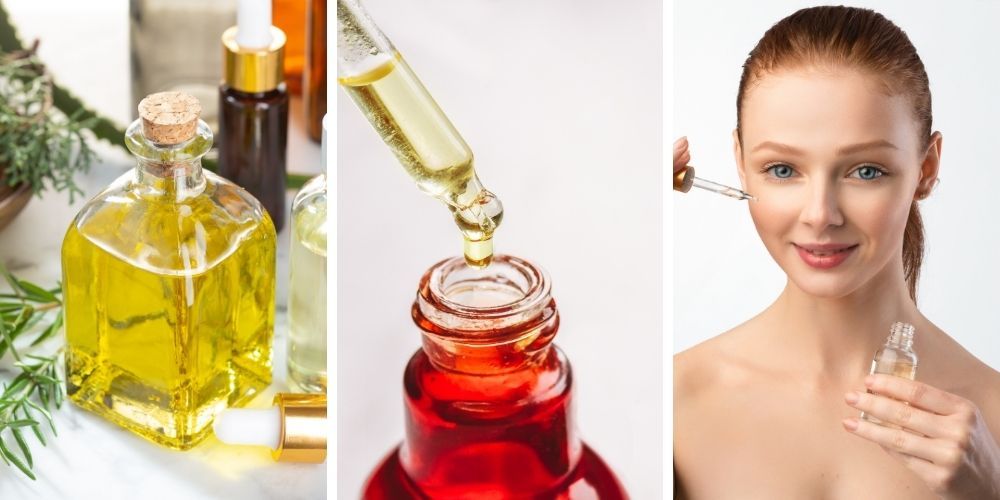
⬇️ 2. DIY Oil Serum for Face
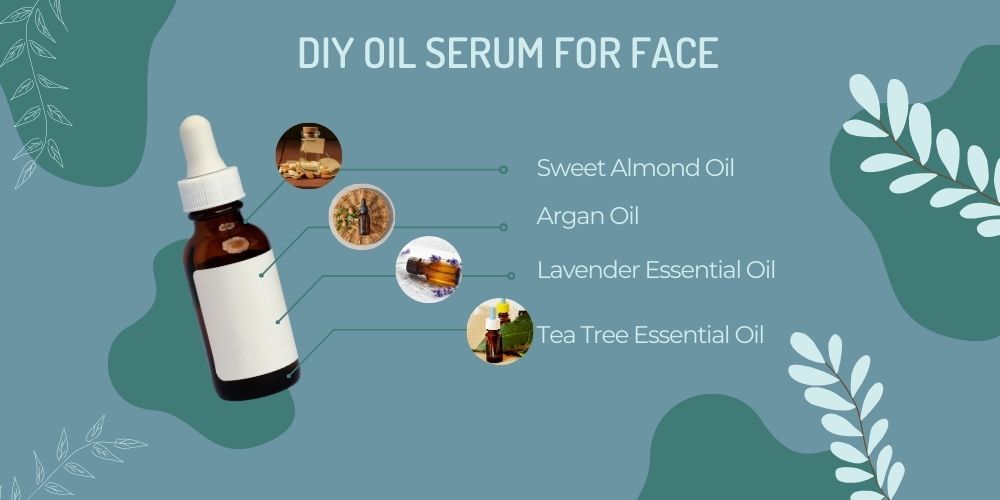
Ingredients:
- 2 tbsp Sweet Almond Oil
- 1 tbsp Argan Oil
- 2 drops of Lavender Essential Oil
- 2 drops of Tea Tree Essential Oil
Instructions:
Start this DIY facial oil serum with 2 tablespoons of sweet almond oil, known for its ability to nourish and moisturize the skin without clogging pores. Add 1 tablespoon of argan oil for its anti-aging benefits. Then, mix in a few drops of both lavender and tea tree essential oils. Lavender soothes, while tea tree helps to keep your skin clear, making this serum perfect for all skin types.
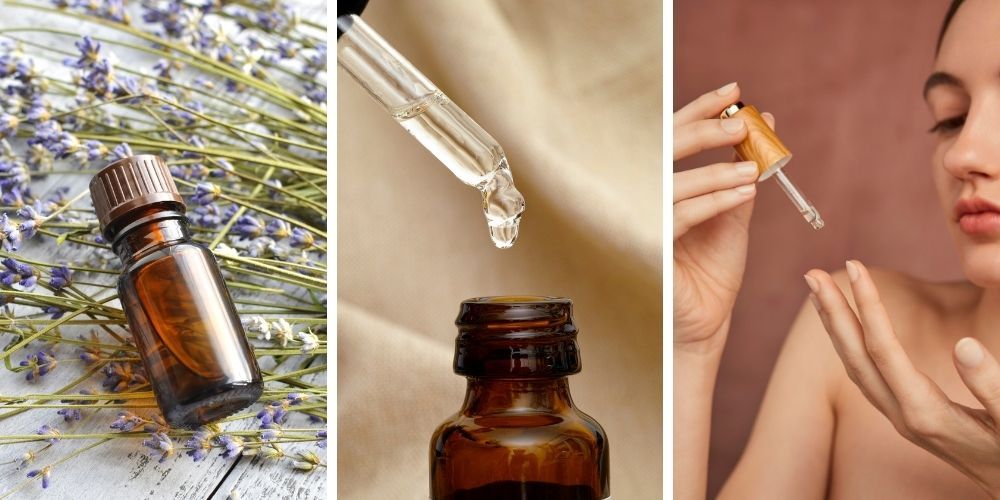
⬇️ 1. DIY Anti-Aging Face Oil
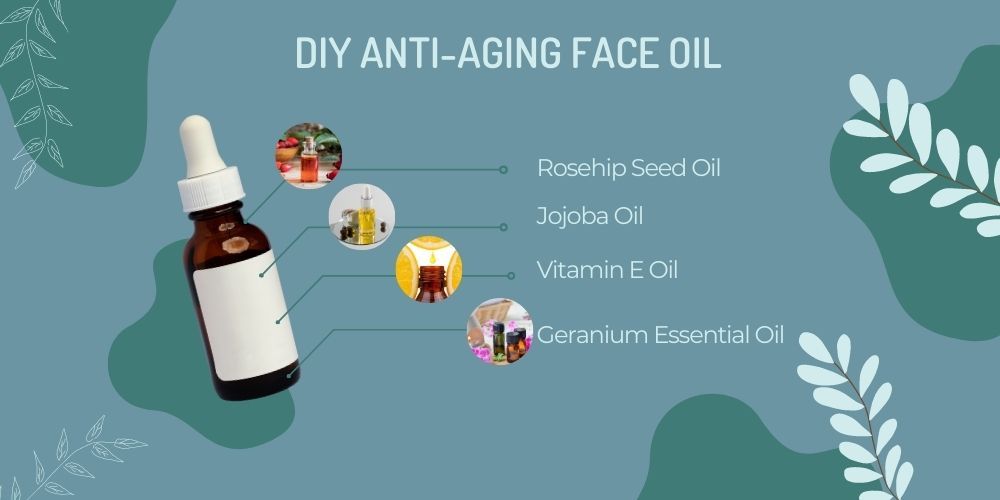
Ingredients:
- 2 tbsp Rosehip Seed Oil
- 1 tbsp Jojoba Oil
- 3 drops of Vitamin E Oil
- 2 drops of Geranium Essential Oil
Instructions:
This homemade facial oil targets signs of aging with a blend of potent natural oils. Start with 2 tablespoons of rosehip seed oil, rich in antioxidants and essential fatty acids, known for their anti-aging properties. Add 1 tablespoon of jojoba oil, a perfect carrier oil that nourishes without clogging pores.
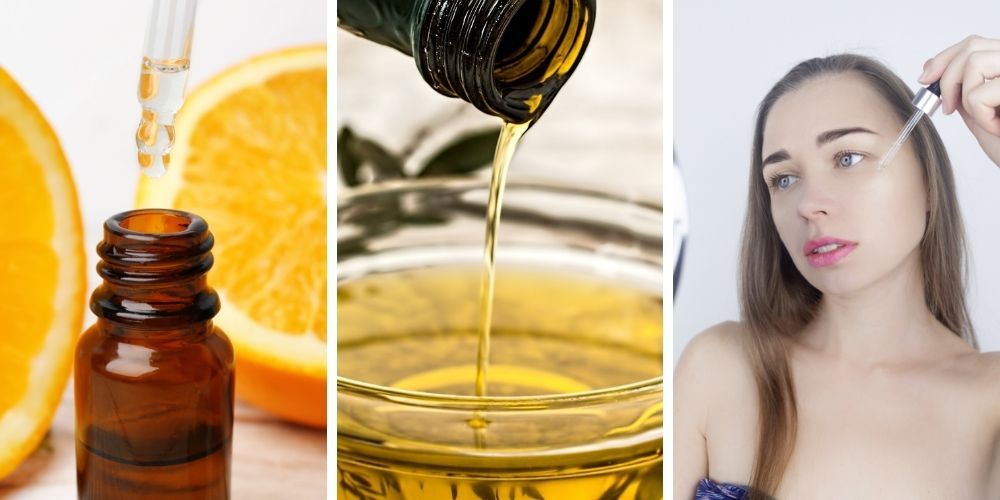
Then, introduce a few drops of vitamin E oil, a powerful antioxidant that protects your skin from aging caused by environmental stressors. Lastly, include 2 drops of geranium essential oil, known for its potential to promote the appearance of tighter, younger-looking skin. Regular use of this custom facial oil can help maintain a youthful, glowing complexion.
Not ready to DIY? Here are some of our face oils favorites:
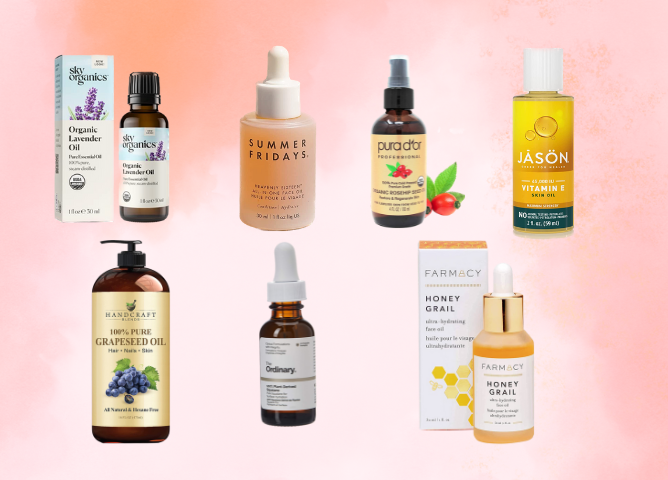
DIY Face Oils FAQ
What is face oil used for?
Face oil is used for various purposes in skincare. It can provide hydration and nourishment to the skin, help balance oil production, improve skin texture, promote a more youthful appearance, and address specific skin concerns such as dryness, aging, or inflammation. Face oil can be a beneficial addition to your skincare routine to enhance the overall health and appearance of your skin.
Can face oil replace moisturizer?
While face oil can provide hydration and nourishment to the skin, it may not necessarily replace a moisturizer for everyone. Moisturizers typically contain a combination of ingredients that provide both water and oil to the skin, while face oils mainly provide oils. Some people may find that using a moisturizer in conjunction with face oil offers optimal hydration and benefits. However, for individuals with oily skin, a lightweight face oil alone might be sufficient as a moisturizer.
Can I leave sunflower oil on my face overnight?
Sunflower oil is generally considered safe for most skin types and is often used in skincare products. However, leaving it on your face overnight may not be suitable for everyone. It's best to conduct a patch test on a small area of your skin to check for any adverse reactions or sensitivity before applying it all over your face. If you have any concerns or specific skin conditions, it's recommended to consult with a dermatologist before leaving any oil on your face overnight.
What is the best oil for your face?
The best oil for your face depends on your specific skin type, concerns, and preferences. Some popular oils for the face include jojoba oil, rosehip oil, argan oil, grapeseed oil, and sweet almond oil. These oils are generally well-tolerated by different skin types and offer various benefits such as hydration, anti-aging properties, and nourishment.
What is the best oil for face wrinkles?
When it comes to addressing face wrinkles, oils rich in antioxidants and essential fatty acids are often recommended. Examples of such oils include rosehip oil, argan oil, evening primrose oil, and pomegranate seed oil. These oils can help improve skin elasticity, reduce the appearance of fine lines and wrinkles, and promote a smoother complexion.
What is the best oil for sensitive skin?
For sensitive skin, it's important to choose oils that are gentle and non-irritating. Some suitable options for sensitive skin include jojoba oil, calendula oil, chamomile oil, and evening primrose oil. These oils have soothing properties and can help calm and nourish sensitive skin without causing further irritation.
What is the best face oil for anti-aging?
Several face oils are known for their anti-aging benefits. Examples of popular anti-aging face oils include rosehip oil, argan oil, marula oil, and seabuckthorn oil. These oils are rich in antioxidants, vitamins, and essential fatty acids, which can help improve skin elasticity, reduce the appearance of wrinkles, and promote a more youthful complexion.
What is the best face oil for mature skin?
Mature skin often benefits from oils that provide deep hydration and nourishment. Some recommended face oils for mature skin include rosehip oil, argan oil, avocado oil, and evening primrose oil. These oils are known for their ability to moisturize, improve skin tone, and reduce the appearance of age spots and fine lines.
What is the best oil for the face?
Ultimately, the best oil for the face varies from person to person. It's important to consider your skin type, concerns, and any specific sensitivities you may have. Conducting patch tests and consulting with a dermatologist can help you determine the most suitable face oil for your individual needs.
Final Thoughts
DIY face oils offer a multitude of benefits for your skin. They provide the power of customization, allowing you to tailor the formulation to your specific skin type and concerns. With DIY face oils, you can harness the potential of different carrier oils and essential oils, providing hydration, anti-aging effects, and overall skin health benefits.
The ability to experiment and create your own unique blend empowers you to find the perfect combination that works best for your skin, ensuring maximum effectiveness and satisfaction. So, embrace the opportunity to explore and try our face oil recipes, and discover the incredible benefits they can bring to your skincare routine. Your skin will thank you for the personalized care and attention.
Please note that we are not medical professionals, and the information provided on this platform is for educational and informational purposes only. It is not intended to be a substitute for professional medical advice, diagnosis, or treatment. We recommend that you consult with a licensed healthcare provider or physician regarding any questions or concerns you may have regarding your health.


